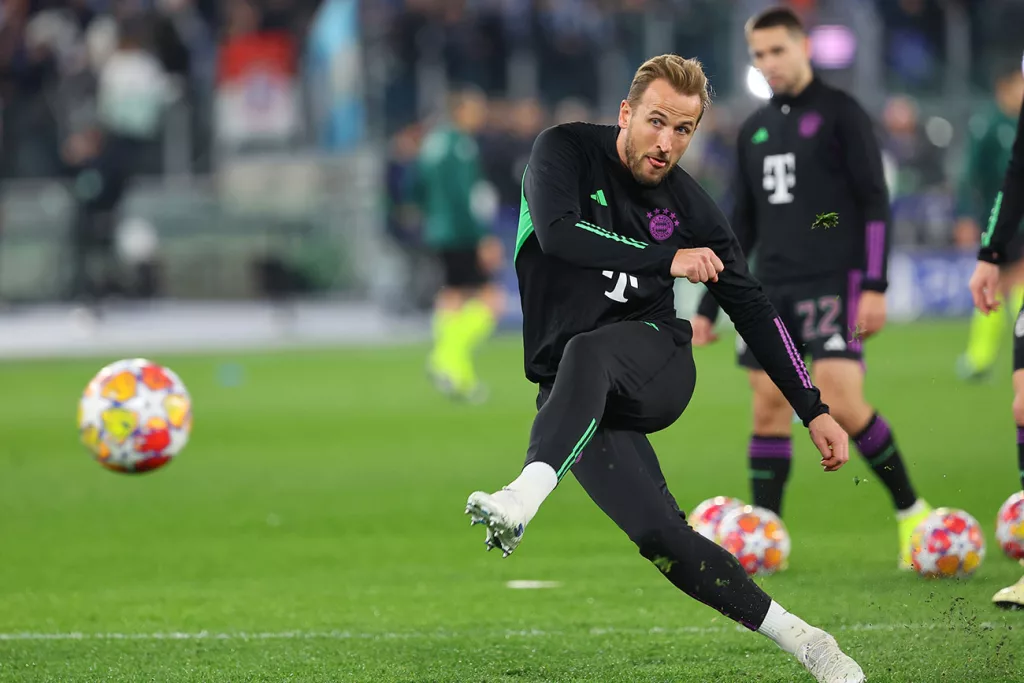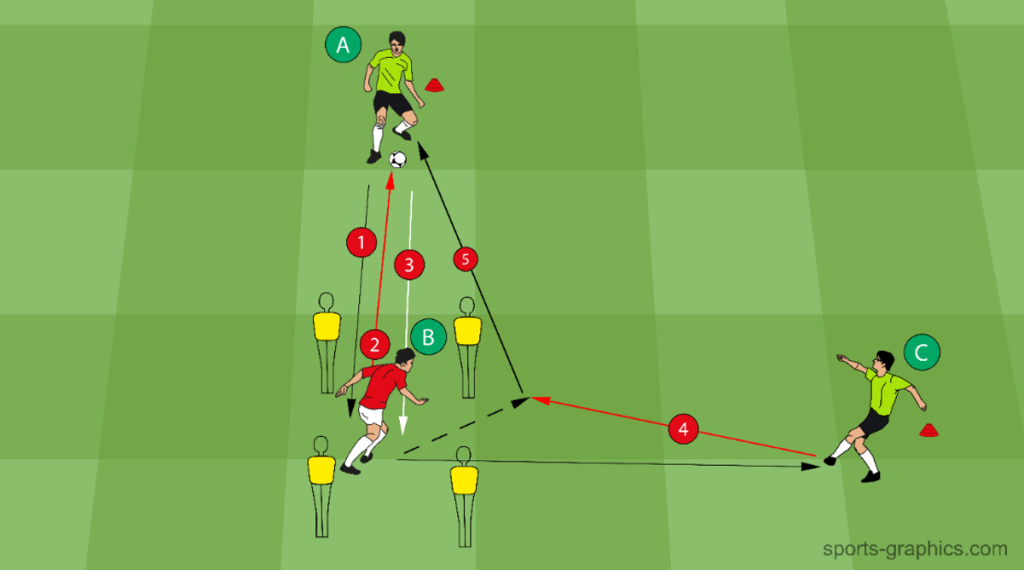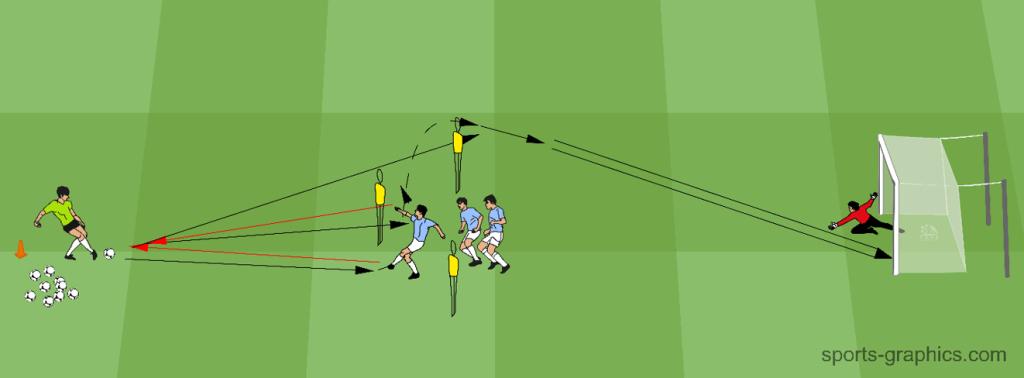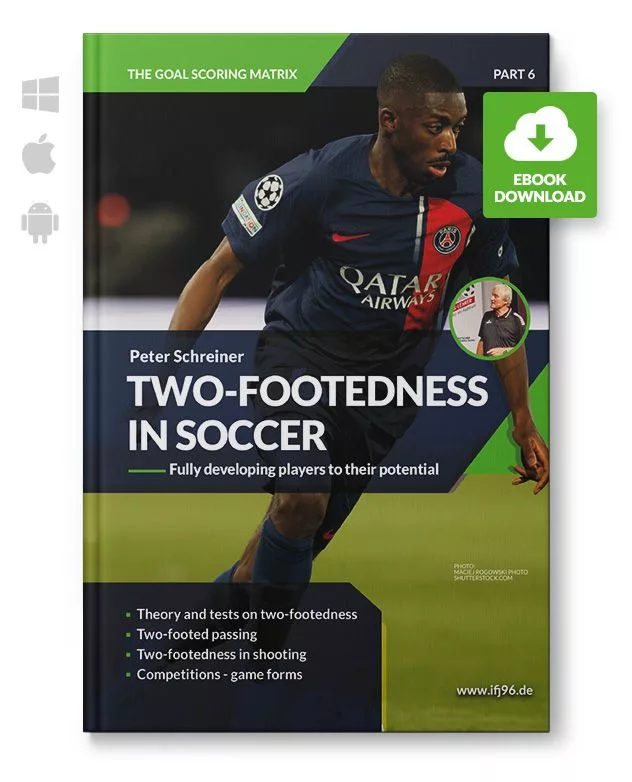Two-footedness is a crucial factor in modern soccer. Players who can operate equally well with both feet are harder to predict, more flexible in their actions, and significantly more efficient in critical game situations. Whether in dribbling, passing, or finishing, the ability to use the appropriate foot in any given situation can make the difference between victory and defeat.
Two-Footedness in Soccer

Train Players Completely – In his new book, Peter Schreiner combines theoretical foundations with 84 practice-oriented training exercises to help players of all age groups develop and perfect their two-footed skills.
- 84 detailed practices
- 154 Pages
- For all ages – U11-PRO
With his new book “Two-Footedness in Soccer – Training Complete Players”, Peter Schreiner, one of the leading experts in soccer coaching, has published a practical guide. Schreiner demonstrates how coaches can systematically train their players to be two-footed—from fundamental exercises to advanced game situations that can be applied directly in competition.

Examples from Practice – Players with Outstanding Two-Footedness
Ousmane Dembélé
The French international is considered one of the most complete two-footed players of today. Both at FC Barcelona and in the French national team, he regularly proves his technical versatility: Dembélé can dribble, pass, and shoot with both feet equally well, making him very difficult for defenders to control.
Lionel Messi
Although Lionel Messi is known as a left-footed player, he has developed his right foot to an impressive level throughout his career. Many of his assists and crucial goals, such as his legendary strike against Bayern Munich in 2015, show that he can rely on both feet.
Harry Kane
The English captain is a prime example of targeted training. Kane systematically trained his weaker left foot with specific exercises in his youth. Today, he regularly scores goals with both feet, making him one of the most dangerous offensive weapons in world soccer.
Kevin De Bruyne
As the playmaker for Manchester City, Kevin De Bruyne is known for his exceptional two-footedness. Whether it’s precise crosses, long-range shots, or defense-splitting passes, De Bruyne uses both feet to create scoring opportunities for his teammates.
Andreas Brehme
A classic example: Brehme, the German World Cup winner of 1990, was notorious for his two-footed ability. The penalty that secured Germany’s title was taken with his right foot—but he could have just as confidently scored with his left.

The Advantages of Two-Footedness
Players who can operate with both feet benefit in many ways:
- Flexibility: Players can act precisely regardless of the game situation.
- Efficiency: No time is wasted switching the ball to the dominant foot.
- Unpredictability: Defenders find it harder to anticipate movements.
- Higher Success Rate: Two-footed players are more versatile and efficient in finishing.
Contrary to earlier beliefs that two-footedness is an innate ability, it is now known that it can be learned and developed through targeted training—even at a later age. A striking example is England’s Harry Kane. Initially considered a classic right-footed player, he dedicated himself to training his left foot intensively at the age of 18.
For three months, he almost exclusively passed and shot with his left foot. The result: Kane became one of the world’s most dangerous strikers, capable of finishing with both feet equally well. This example proves that two-footedness is not an inborn talent but a trainable skill that requires consistent and structured practice—regardless of age.
Two-Footedness in Theory and Practice
In his new book, Peter Schreiner not only summarizes the theory behind two-footedness but also develops practical training drills to facilitate learning. From simple passing exercises to realistic game scenarios, the book covers all aspects coaches need to develop fully capable players.
To provide insight into the practical application of these training methods, here are two passing drills that can be easily integrated into training sessions to help players master both feet equally well.
Passing in a Three-Player Group: 90-Degree Variation

Setup:
- Set up a right-angle square with cones or dummies.
- Position three players with a ball as shown.
- This drill should also be performed on the other side.
Execution:
- A passes to B in the middle.
- B returns the ball to A.
- A passes to B again, who then plays a two-touch pass to C.
- C plays a direct pass into B’s run so that B can pass at a 90-degree angle to A with his right foot.
- The sequence then repeats.
- Switch positions and directions after a few repetitions.
Coaching Points:
- The body position before the 90-degree pass should not require a full turn.
- The pass from C must not be played behind B.
Passing with Opening to the Left or Right

Setup:
- A passer with enough balls.
- Cones set up as shown in the diagram.
- 3-5 players behind the first dummy.
- 1-2 goalkeepers.
Execution:
- The passer alternates passing to the left and right past the dummy.
- The attacker always returns the ball directly.
- The passer lifts a red or yellow cone, signaling the shooter to move left or right and get into position for a shot.
- The shooter takes the ball with the first touch toward the goal and finishes precisely, retrieves the ball, and joins the back of the line.
- The next player follows.
- The passer should be rotated regularly.
Conclusion – Two-Footedness Through Focused Training and Commitment
Two-footedness is not an innate ability but a skill that can be developed at any level through targeted training and commitment. Players like Andreas Brehme, Ousmane Dembélé, and Harry Kane have demonstrated how much of a difference this ability can make in modern soccer. With his new book, “Two-Footedness in Soccer – Training Complete Players”, Peter Schreiner provides a guide for coaches to help their players develop this crucial skill.
Whether in passing or finishing, the ability to operate flexibly with both feet not only makes players more effective but also takes them to a higher level. Coaches who emphasize two-footedness early on give their teams a significant advantage.
Two-Footedness in Soccer

Train Players Completely – In his new book, Peter Schreiner combines theoretical foundations with 84 practice-oriented training exercises to help players of all age groups develop and perfect their two-footed skills.
- 84 detailed practices
- 154 Pages
- For all ages – U11-PRO

